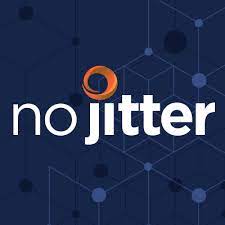No Jitter Contributor Guidelines: 2024No Jitter Contributor Guidelines: 2024
May 2, 2024

Thank you for your interest in contributing to No Jitter. The following guidelines can help you as you work with us. Click on the links below to jump to a specific section.
Who our audience is
When you write for No Jitter, your primary audience is comprised of enterprise IT decision-makers responsible for implementing/managing their organizations’ employee and customer-facing communications and collaboration strategies, building collaborative, connected workplaces, and customer experience and employee experience. The product categories these readers are directed concerned with are collaboration, communications/telecom, and contact center technology.
What we’re looking for
When submitting a pitch, be focused and brief, grab the editor’s attention, think about what you specialize in and lean into your personal experience and knowledge base. We’re not looking for fancy. Just a simple paragraph or two that explains:
What the story is about
Why the story is worth doing
Who you’re writing this for
How this fits into your coverage of the topic for us
How many words you’re expecting to write
You can even just use the list above to call out each specific item as you explain why this story is the one you must write. The pitches don’t have to be high art, they just have to help us see where and how the story extends your subject area mastery and why this story is the one we need. We are looking for copy that exhibits original research or thought. It should include reporting from original interviews with connections you have sourced yourself, while maintaining an authoritative tone of voice.
To pitch us, send an email to Lisa Schmeiser (No Jitter Editor in Chief/ Enterprise Connect program co-chair).
Article guidelines
Length
Writers should aim for article lengths of 750 to 1,000 words for No Jitter.
Editorial voice & why we’re talking about it
The tone and style with which our messages are communicated is referred to as editorial voice. An editorial voice should help establish a connection with the reader and convey something about the distinctive qualities of your own thinking, observations and style.
To ensure that your writing is accessible and easily understandable, strive to explain concepts in an authoritative and jargon-free manner using an active voice. If you're going to be using acronyms while you write -- common in tech -- please define them on first mention. For example:
"When writing a specification sheet for your readers, be sure to define each Three Letter Acronym (TLA) on its first mention. Tech is awash in both TLAs and Four Letter Acronyms (FLA)."
Ask yourself two questions to help you figure out what you want to say: What do I want the audience to understand? and How do I want the audience to use the information? When writing, use the active vs. passive voice—i.e., Kevin kicked Jim vs. Jim was kicked by Kevin—it helps your writing seem less stuffy and cuts down on text length.
Style Guides
We follow AP Style. While we personally adore having a copy of the AP Styleguide, we find that our writers can get by with this online cheat sheet.
Sourcing and quotes
Provide original sourcing (links when possible) for any cited statistics, referenced material, quotes, etc. (Re: original — rather than linking to an article containing statistics used in a post, for example, provide the link to the actual research. For example, if you're going to be citing a Pew Research statistic, link to the release with the numbers, not the CNBC article summarizing the same research.)
Using Generative AI-Powered Assistants
While we think assistive tools like spell and grammar checks are great – please do not fire up a copilot or hit a web-based openAI model and ask it to write you a piece. You can find out more about our generative AI editorial policy on this page.
Exclusivity
Please prepare your article exclusively for No Jitter. Do NOT republish the piece from elsewhere, including a company blog.
We will not publish content that already has appeared elsewhere.
Once published on No Jitter, copy can be shared elsewhere, with No Jitter identified as the original posting site with a link to the post.
How to submit an article
If you’re a new author, here’s what we need
When submitting your article, please provide an author headshot (sized at 150x150px), bio, and, optionally, contact information—any or all: email, LinkedIn, Twitter. We will use this information to create your author page for the site.
File formats
Send your articles to your editors as a Word attachment. Your edits will be returned as Word attachments with the Track Changes option turned on so you can see the full scope of the edits.
Include a headline (limit: 57 characters) and a deck, or subhead, sometimes called an abstract (limit: 160 characters).
Who to contact
You can submit articles for review as an attachment via email to No Jitter Editor in Chief Lisa Schmeiser([email protected]) and associate editor Hannah Warfel ([email protected]).
What the editing and publication process will be like
You’ll send in your article per the submission directions above.
An editor will send an email acknowledging receipt and trying to provide a timeframe when to expect edits from us. (We normally turn around edits within two working days; if you submit an article on Thursday afternoon or Friday, you'll likely get it on Tuesday the next week.)
You’ll receive a second email with edits.
You'll review the edits and make changes and revisions as needed.
You'll email us back with the edits and queries addressed.
Once we approve the edited version and resolve any editorial queries that are outstanding, we will schedule the article in our content management system and schedule the social media posts.
About the Author
You May Also Like





